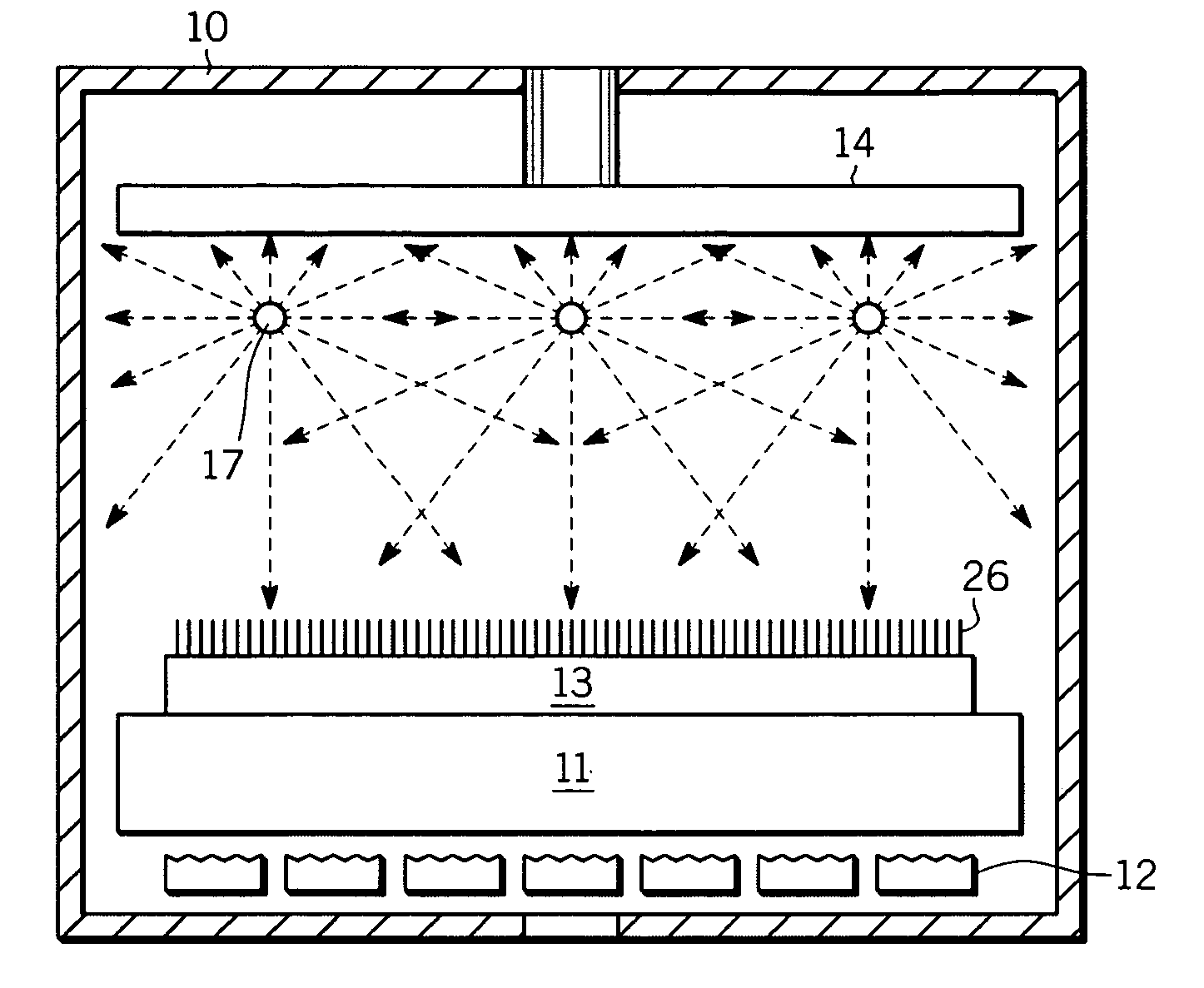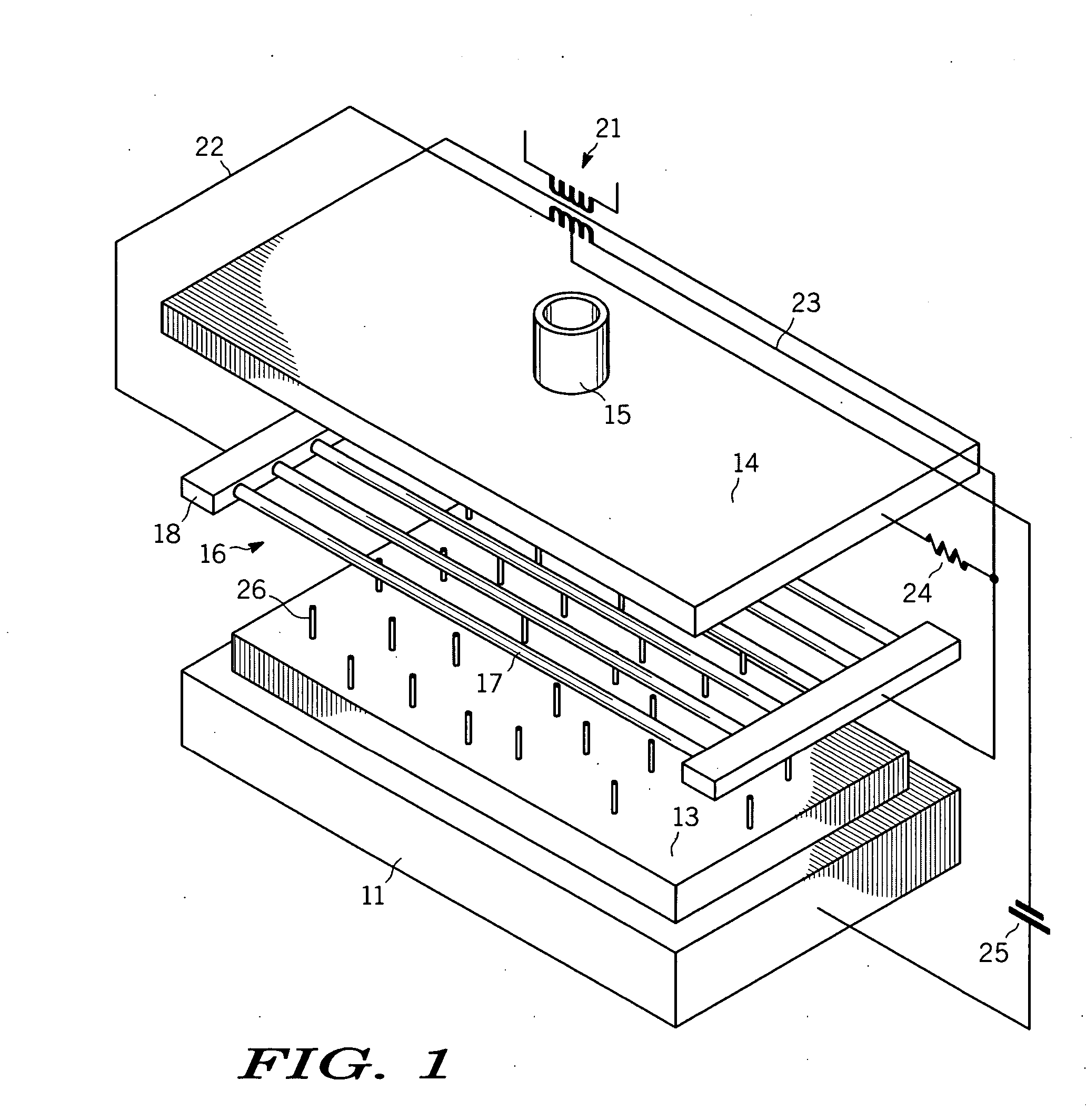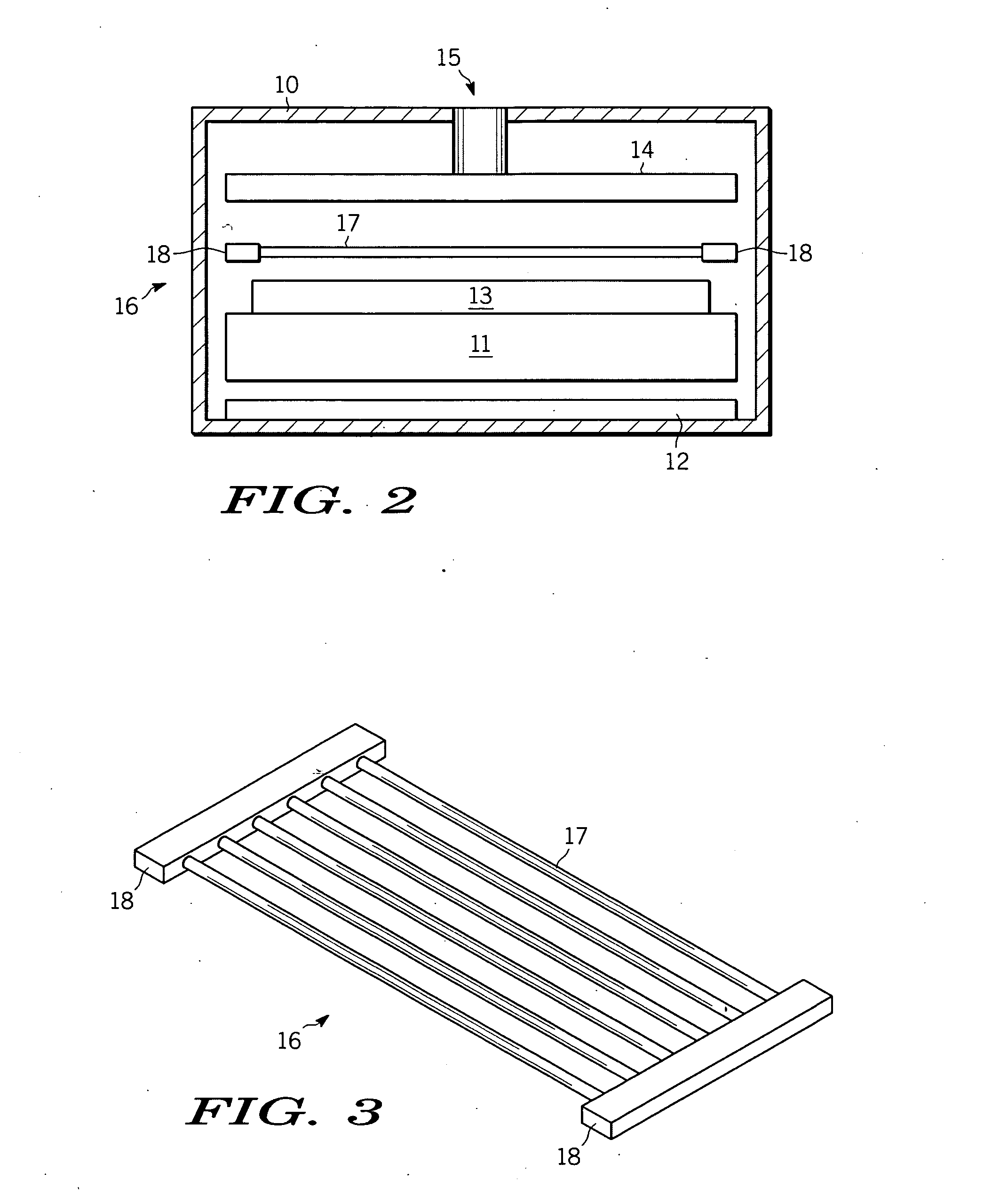Apparatus and process for carbon nanotube growth
- Summary
- Abstract
- Description
- Claims
- Application Information
AI Technical Summary
Benefits of technology
Problems solved by technology
Method used
Image
Examples
process example
[0044] During a batch HF-CVD process, the HF-CVD reactor is evacuated at a base vacuum pressure in the low 10E-6 Torr by using primary and a turbo-molecular pump package. Once the base pressure in the reactor is reached, the heating element 16, comprising filaments 17 for example, is heated at a temperature preferrably greater than 1500 degree C. The substrate heater 12 is also switched on and allows the substrate 13 temperature to be controlled independently from the filament 17 temperature.
[0045] When the substrate 13 reaches a temperature of 350 degree C., molecular high purity hydrogen gas is flowed through a mass flow controller (MFC—not shown) over the hot filament 17. The pressure in the reactor 10 is controlled by adjusting the throttle valve between the deposition chamber (housing 10) and the vacuum pump (not shown), as well as by the MFC. The MFC provides a way to introduce fixed flow rates of process gases into the HF-CVD reactor. The first step of the carbon nanotube gr...
PUM
| Property | Measurement | Unit |
|---|---|---|
| Temperature | aaaaa | aaaaa |
| Chemical properties | aaaaa | aaaaa |
| Current | aaaaa | aaaaa |
Abstract
Description
Claims
Application Information
 Login to View More
Login to View More - R&D
- Intellectual Property
- Life Sciences
- Materials
- Tech Scout
- Unparalleled Data Quality
- Higher Quality Content
- 60% Fewer Hallucinations
Browse by: Latest US Patents, China's latest patents, Technical Efficacy Thesaurus, Application Domain, Technology Topic, Popular Technical Reports.
© 2025 PatSnap. All rights reserved.Legal|Privacy policy|Modern Slavery Act Transparency Statement|Sitemap|About US| Contact US: help@patsnap.com



